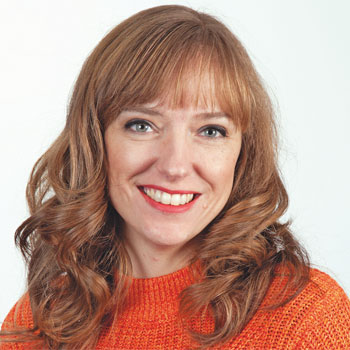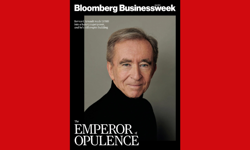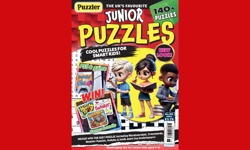
Sally Saunders was 25 when Psychologies arrived in the UK. “It was the magazine I would buy at the station, not just because it would be a great read on the train, but because I felt it said something about me to be seen reading it,” she says. Now, nearly 20 years later, she is leading a redesign to bump it up to a main spot in women’s magazines. “Of all the titles, this was the one I most fancied getting my hands on,” says Saunders, who most recently edited Mother & Baby. “I felt it had lost its way.”
When Saunders became editor of Psychologies last spring, she was on a mission. “It had started to feel like Life Coach Monthly,” she says. “I’ve been manoeuvring it back into the mainstream.” The self-help magazine, hailed at its UK launch in 2005 as the thinking-women’s glossy, had become too narrow in its approach and how it saw its reader. “It seemed to say that life coaching was the answer to everything and that felt so narrow in terms of how it would appeal to ordinary women.”
For a magazine about transformation, it feels appropriate that Psychologies has just had a revamp. The original magazine, created in France in 1970, had been a small journal for therapists. Then, after a makeover, it took off, thriving on a circulation of 300,000. Hachette Filipacchi, who brought it over here, hoped for similar success by backing a brand that championed how women felt rather than just how they looked. By 2008, it was enjoying a circulation of 150,000.

Since then, women’s magazines have experienced both the decline of print and the rise in recognition across the board that women are interested in more than their appearance. But, for Saunders, Psychologies still has a niche. “Once you feel a bit too old for Women’s Health and far too young for Good Housekeeping, then I want your first choice to be Psychologies. That for me is absolutely our slot.” Readers, who are almost all women, tend to be 35 to 65. The average age is 46. “The focus had been women in their 30s,” says Saunders, 42, “but I see women in their 40s and 50s as the core group. It’s the sandwich generation: people who are juggling a hell of a lot of balls.”
These readers, believes Saunders, are looking for small ways to improve their lives. “The magazine had become about making big changes. That’s exhausting. Those changes become another thing on people’s to-do list. Now it’s about taking small steps to make every day better.”
It had started to feel like Life Coach Monthly – I’ve been manoeuvring it back into the mainstream.
In with the new
The new-look, new-feel magazine, revealed in the October issue, was based on extensive research by Kelsey, Psychologies’ publisher, who asked 30 women to dissect different elements in an online forum over five days. “They went into huge amounts of detail,” says Saunders. “We got so much feedback.”
Saunders set about strengthening brand recognition. “Lots of people had no clue what the magazine was about,” she admits. “Quite a lot were put off by the title ‘Psychologies’ and thought it looked a bit too ‘medical journal’. I wanted it to be the type of publication people would chuck in their basket at the checkout. It needed to look accessible.”
First for a refresh was the masthead. “It was all shouty caps. It didn’t make the magazine look like something you’d want to curl up with.” Saunders and her designer softened it, knocking down the caps to lowercase and turning the red letters pink. Psychologies (France) – now separate from Psychologies (UK) – has since done the same.
Next were the layouts. “There used to be lots of sharp lines. Now, there are squiggly borders and watercolours,” says Saunders. “It looks textural and creative.” But it’s not all about being warm and fuzzy. “I want to include pieces with a bit of bite… to use the softer appearance to deliver engaging stories, perhaps based on new research. I want them to have oomph.”
I want readers to feel that they don’t need another magazine because Psychologies has everything they could ever want.
A title for today
These stories may tackle serious issues, but will always take an optimistic tone. One feature this winter touched upon seasonal affective disorder (SAD). Psychologies in its previous shape, says Saunders, might have been all about “someone’s dreadful experience. I wanted our piece to show that winter can be wonderful – and then add: ‘If you don’t feel that way, you might have SAD’. I wanted it to be uplifting.”
Then there’s the serious issue of Covid. Circulation, like that of many magazines, struggled during the various lockdowns as shoppers avoided browsing. But there was also a question in house over whether the magazine should even acknowledge the pandemic. “I felt they didn't know whether to talk about it,” says Saunders, “like there was a bit of putting their fingers in their ears… Some people wanted the magazine to be as useful if you picked it up in the doctor’s surgery in a year’s time as it would be today.”
Saunders disagreed: she wants issues of the magazine under her editorship to speak to readers now. “I want the magazine to look seasonal and be topical.” The title had tended to have two bumps in circulation a year: in January and September, traditional times of renewal. “Magazines won’t survive if people only buy them twice a year,” notes Saunders. “People need to have a reason to buy them every month.”
Facing Covid has been a challenge for many monthlies because of lead times, where content is put together up to five months before the run date. But for Saunders, who worked for years at the Daily Mail and the Telegraph, adapting has been easy. “I’m agile,” she says. “If I have to change something, I just do it.”
I want people to lose track of time and engage in the pages. That’s the magic of magazines: they’re immersive.
A wider scope
Saunders wants Psychologies to have substance. “I want to give people something to read. Sometimes, there were just two features; now we have at least seven.” The features, which all have a psychological perspective, might be about how to negotiate for what you want or how to say ‘no’. Recently, they have been about making 2022 your year of hope. All have “genuine takeaway”.
Content now slots into four pillars. Mind pieces might help readers become more confident or beat stress; Body articles might explore the joys of walking or suggest ways to sleep better; Heart features look at relationships; and Soul ones help the reader find their purpose in work or travel. The older Psychologies might have shied away from physical issues, such as sleep, food and exercise, but, as Saunders points out, your physical wellbeing affects your mental state. “The magazine is here to support you with your emotional wellbeing and that covers a really broad range… I want readers to feel that they don’t need another magazine because Psychologies has everything they could ever want.”
Saunders has also increased the dossier, a section taking a different theme each month, from 12 to 16 pages, picking topics that might have made editors of women’s magazines past gasp. The February one looks at how to balance your hormones around the menopause, while one in the spring will explore ageing. Both have a positive spin and suggest solutions “that aren’t always the norm”. Sitting behind the dossier is a new Heroes page, suggesting relevant products, which helps with ads, as well as appealing to readers. “Readers like products,” says Saunders. “But their inclusion has to be done well. I don’t want to crowbar them onto the pages.”
The cover stars, once buy-ins with A-listers such as Jennifer Lawrence and Natalie Portman, are now aspirational but relatable British-based celebrities. Since Saunders has taken over, Nadiya Hussain, Rochelle Humes and Myleene Klass have been in the magazine, sharing issues in their lives that readers might also experience. “Myleene Klass talked about having four miscarriages and gave heartrending details. She spoke with such honesty,” says Saunders. “If you're doing interviews like that, where celebrities are being a bit more real, then there’s space for that. I want to develop the magazine as a platform for strong, genuine stories.” The latest scoop has been Kimberley Walsh, the Girls Aloud singer, talking for the first time about losing her bandmate Sarah Harding. “When I read it, it made me go all goosebumpy. That’s not something you get very often.”
Magazines won’t survive if people only buy them twice a year. People need to have a reason to buy them every month.
The power of print
Saunders, who works three days a week, leads a small body of freelancers. She looks after print, with digital being covered back at Kelsey HQ. One day, they might all work together, but the current separation allows her to focus on the physical page.
Psychologies has a strong argument for making print a priority. The magazine, points out Saunders, is about the benefits of a slower pace of life. “It’s giving the reader permission to sit down and switch off and not look at a screen and not run after their kids and not do all the chores that are building up. I want people to lose track of time and engage in the pages. That’s the magic of magazines: they’re immersive.”
Reader response has been hugely encouraging both at the individual level, where readers have written to Saunders to say that a feature has changed their life, and collectively: “Since the relaunch, newsstand figures have been up 50 per cent year on year, averaging across the first three issues,” says Saunders. “We're going to release our ABC sales in the spring for the first time in a couple of years because it's going really well. That feels like a flag-in-the-sand moment. There may be times when the magazine struggles, but we’ll get through it. When life's good, you need to enjoy it.”
This article was first published in InPublishing magazine. If you would like to be added to the free mailing list, please register here.












